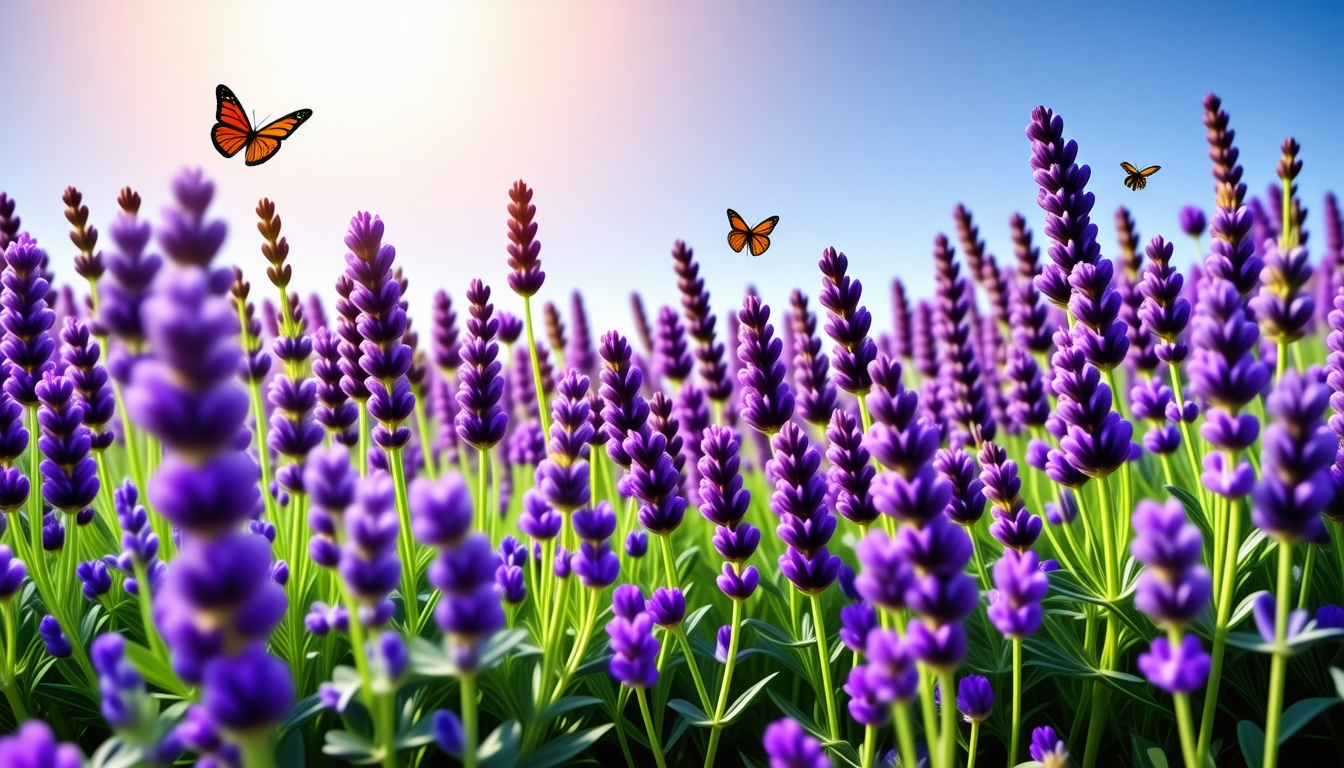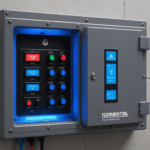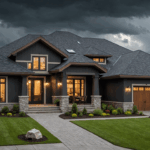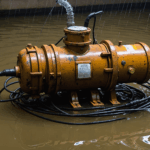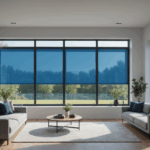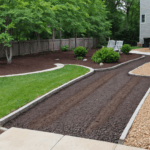Landscaping can be a rewarding endeavor, yet for many busy homeowners, finding time to maintain a traditional garden can be a challenge. Embracing drought-resistant plants offers both a practical and aesthetically pleasing solution, particularly in areas prone to water scarcity. By incorporating a variety of these hardy plants into your garden design, you can reduce water consumption and maintenance while still enjoying a lush outdoor space.
Drought-resistant plants, often referred to as xerophytes, have evolved to thrive with minimal water. These resilient species are not only beneficial for conserving water but also add a unique texture and color palette to your yard. Consider integrating a mix of native and non-native drought-tolerant species to create a dynamic landscaping ensemble that can withstand hot, dry conditions. Here are some popular options:
- Succulents such as agave and sedum, which store water in their fleshy leaves.
- Native grasses like blue grama or feather reed grass that require little care and add movement to your garden.
- Flowering plants such as lavender and echinacea that provide bursts of color while attracting pollinators.
- Ground covers like creeping thyme or ice plant that offer excellent soil coverage with minimal watering needs.
When selecting drought-resistant plants, it’s important to consider your local climate and soil conditions. Additionally, these plants can be strategically placed in your garden to maximize their impact. For example, planting drought-resilient species on south-facing slopes, where sunlight is most intense, can help reduce water loss due to evaporation.
To illustrate the benefits of drought-resistant flora, consider the comparison of water usage between traditional and xeriscaped gardens:
| Traditional Garden | Xeriscaped Garden |
| High water requirements | Low water requirements |
| Frequent watering needed | Infrequent watering needed |
| Higher maintenance efforts | Lower maintenance efforts |
| Lush appearance with various plants | Lush appearance with drought-tolerant varieties |
By opting for drought-resistant plants, you not only embark on an environmentally friendly outdoor renovation but introduce time-saving tips that minimize your garden’s upkeep needs. This approach not only adapts to the ever-changing climate but also ensures that your landscaping remains vibrant and sustainable, giving you more time to relax and enjoy your outdoor oasis.
perennial ground covers
For busy homeowners, incorporating perennial ground covers into landscaping projects is a strategic choice that significantly reduces maintenance efforts while providing long-lasting visual appeal. Perennial ground covers are low-growing plants that spread to form a dense carpet, reducing the need for regular weeding, watering, and mowing. Here’s how to effectively add these time-saving ground covers to your outdoor renovation plans:
1. Select Appropriate Species: Choose ground covers that thrive in your climate and are well-suited to your garden’s sunlight and soil conditions. Some popular options include:
– Creeping Jenny (Lysimachia nummularia): Known for its vibrant green foliage, which turns golden in the fall, offering year-round interest.
– Sweet Woodruff (Galium odoratum): A shade-loving plant with delicate white flowers in spring, perfect for under trees or shady areas.
– Ajuga (Ajuga reptans): Offers dark green foliage with purple blooms, ideal for sunny or partially shaded spots.
2. Prepare the Soil:
– Clear the area of weeds and debris for optimal growth.
– Work organic matter such as compost into the top layer of soil to improve drainage and provide nutrients.
3. Planting Ground Covers: Timing is essential for the successful establishment of perennial ground covers. Early spring or late fall are ideal planting times.
– Space plants according to their mature spread to ensure complete coverage over time. Refer to the plant label for spacing recommendations.
– Dig holes slightly larger than the root ball and gently position plants at the same depth they were in their pots.
4. Watering and Initial Care:
– Water new plantings thoroughly after installation and keep the soil consistently moist until plants are established, typically within the first growing season.
– Once established, many ground covers are drought-tolerant, requiring minimal watering.
5. Maintenance and Care:
– Apply a layer of organic mulch to suppress weeds and retain soil moisture, reducing the long-term need for maintenance.
– Prune back ground covers annually in early spring to encourage dense, lush growth and maintain their appearance.
By following these steps, you integrate a practical and attractive element into your landscaping that not only saves time but also enhances the overall aesthetic of your outdoor space. Embracing perennial ground covers ensures your garden remains vibrant with minimal intervention, allowing more leisure time to enjoy your oasis.
smart irrigation solutions
Incorporating smart irrigation solutions into your landscaping offers a host of benefits that are particularly appealing to busy homeowners seeking time-saving tips for outdoor renovation. Smart irrigation systems employ technology to ensure your plants receive the optimal amount of water, thereby promoting healthy growth while minimizing waste. This not only saves you time by automating watering schedules but also contributes to water conservation efforts—a critical factor in sustainable landscaping practices.
One of the principal advantages of using smart irrigation is its efficiency. These systems often involve weather-based controllers or soil moisture sensors that automatically adjust watering patterns based on real-time data. For example, if it rains, your smart irrigation system will detect the additional moisture and reduce or skip scheduled watering sessions. This feature is especially beneficial in regions prone to fluctuating weather conditions, ensuring that moisture levels are balanced without requiring manual adjustments.
Another significant benefit is the cost savings associated with reduced water usage. Over time, optimizing water consumption not only lowers utility bills but also minimizes the impact on local water resources. For homeowners aiming to integrate environmentally friendly practices into their homes, smart irrigation is a forward-thinking solution that underscores commitment to sustainability.
Furthermore, the user-friendly nature of modern smart irrigation systems adds an extra layer of convenience. Many systems can be controlled via smartphone apps, allowing you to manage your landscaping from anywhere at any time. Such remote access is ideal for frequent travelers or those with hectic schedules, providing peace of mind that your garden’s needs are always being met.
Beyond individual benefits, installing smart irrigation contributes to the overall health and longevity of your entire garden. By providing consistent and appropriate water levels, plants are less susceptible to common issues such as root rot or drought stress. This sustained health results in a more vibrant and lush landscape, enhancing the aesthetic appeal of your outdoor space without demanding constant intervention.
To get started, consult with a professional landscaper who can offer guidance on selecting the best system for your specific needs and environmental conditions. Whether through drip irrigation, rotor sprinklers, or a combination of technologies, customizing your smart irrigation system ensures your garden thrives with minimal input.
By investing in smart irrigation solutions, not only do you gain a cutting-edge approach to garden maintenance, but you also align your outdoor renovation goals with sustainable and efficient practices. This allows you to spend less time tending to your yard and more time enjoying the serene beauty of a well-maintained landscape.
minimal upkeep hardscaping
When designing your outdoor space with minimal upkeep in mind, integrating hardscaping elements is a key strategy that offers both beauty and function with minimal maintenance. Hardscaping refers to the use of non-plant elements in your garden, such as patios, pathways, walls, or stone features. These elements not only enhance the visual appeal of your landscape but also contribute significantly to reducing upkeep, allowing busy homeowners to enjoy their outdoor spaces without constant maintenance demands.
Consider incorporating durable materials like natural stone, concrete, or pavers for paths and patios. These materials are not only aesthetically pleasing but are also incredibly resilient to weather changes. Unlike lawns or other plant-based features that require regular mowing, weeding, and watering, hardscaped areas demand very little upkeep. With the right selection of materials and design, you can achieve a beautiful and functional space that perfectly complements your overall landscape design.
When planning your hardscaping, consider creating multipurpose spaces that can serve various activities, such as dining, relaxing, or hosting gatherings. A well-designed patio can seamlessly extend your home into the garden, providing a perfect spot for leisure and social activities. Meanwhile, incorporating features like built-in seating or fire pits can add additional comfort and functionality year-round, making your outdoor space not just visually appealing but also practically beneficial.
To further decrease maintenance needs, choose permeable paving options that allow water to seep through the ground naturally, reducing runoff and helping to maintain the health of surrounding plant life. This approach not only promotes sustainability but also minimizes the need for extensive irrigation systems, aligning with environmentally friendly landscaping practices.
In terms of design, simplicity is key. Opt for clean lines and simple shapes to create a harmonious balance with the surrounding natural elements. Minimalist hardscaping can transform a cluttered yard into a serene, ordered oasis that requires far fewer resources to keep looking pristine.
Finally, while planning, remember that smart placement of hardscaping can significantly direct foot traffic and reduce wear on planted areas, ultimately contributing to the longevity and appearance of your entire garden. Work with a professional landscaper who can provide site-specific advice and help balance hardscape and softscape effectively for your outdoor renovation.
By focusing on minimal upkeep hardscaping, you incorporate valuable time-saving tips into your landscaping project. This ensures that your outdoor space remains both beautiful and easy to maintain, allowing you to spend more time enjoying your garden and less time on upkeep.
easy-care container gardens
Embracing easy-care container gardens allows busy homeowners to indulge in the joys of gardening without the burden of intensive maintenance. These versatile and portable arrangements are an excellent choice for small spaces, patios, or even larger gardens, offering flexibility and convenience that traditional in-ground planting often lacks. With careful selection of plants and containers, you can create stunning displays that thrive with minimal intervention.
Start by choosing the right containers. Opt for options that are large enough to allow root expansion but manageable enough for relocation if needed. Materials like ceramic, fiberglass, or high-quality plastic help retain moisture while being durable enough to withstand changing weather conditions. Additionally, ensure your containers have adequate drainage to prevent waterlogging and root rot.
Next, select an array of plants that are known for their low-maintenance requirements. Succulents and cacti are popular choices, thanks to their ability to store water and withstand drought conditions. Consider herbs such as rosemary, thyme, or basil, which not only add fragrance and flavor to your cooking but also require minimal attention. Ornamental grasses and compact shrubs can add height and structure, ensuring your container garden is as varied as it is easy to care for.
When arranging your container gardens, an effective strategy is to combine plants with similar water and sunlight needs. This simplifies the care routine and ensures that all plants receive the appropriate care. Utilize multi-level arrangements by placing taller plants at the center or back of the container, with trailing or smaller species around the edges for a balanced look. The “thriller, filler, spiller” formula—combining a central striking plant (thriller), surrounded by more numerous, complementary plants (fillers), and finished with plants that cascade over the edges (spillers)—can create dynamic and visually appealing displays.
To further streamline care, employ self-watering containers or add saucers beneath pots to catch excess water, reducing the frequency of irrigation. Incorporate a slow-release fertilizer during planting to supply nutrients over time, allowing you to focus more on enjoying your garden than managing a complex feeding schedule.
By following these strategies, you can successfully integrate a time-saving and beautiful aspect into your outdoor renovation. Easy-care container gardens not only offer aesthetic enhancement but also bring a sense of tranquility and achievement without overwhelming your schedule.
In conclusion, by incorporating these low-maintenance landscaping ideas, busy homeowners can create outdoor spaces that are both beautiful and easy to manage. Whether utilizing drought-resistant plants, perennial ground covers, smart irrigation solutions, minimal upkeep hardscaping, or easy-care container gardens, these time-saving tips ensure your garden remains sustainable, vibrant, and enjoyable with minimal effort. Transform your outdoor area into a personal oasis that perfectly suits your lifestyle.
